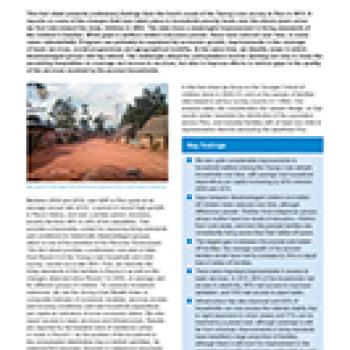Publication Information

This fact sheet presents preliminary findings from the fourth round of the Young Lives survey in Peru in 2013. It reports on some of the changes that have taken place in household poverty levels over the eleven years since we first interviewed the study children in 2002. The data show a meaningful improvement in living standards of the children’s families. While gaps in welfare-related outcomes persist, these have reduced over time, in some cases substantially. Progress can probably be explained by economic growth, improvements in the coverage of basic services, social programmes and geographical mobility. At the same time, we identify areas in which disadvantaged groups still lag behind. The challenges ahead for policymakers involve working not only to close the persisting inequalities in coverage and access to services, but also to improve efforts to reduce gaps in the quality of the services received by the poorest households.

This fact sheet presents preliminary findings from the fourth round of the Young Lives survey in Peru in 2013. It reports on some of the changes that have taken place in household poverty levels over the eleven years since we first interviewed the study children in 2002. The data show a meaningful improvement in living standards of the children’s families. While gaps in welfare-related outcomes persist, these have reduced over time, in some cases substantially. Progress can probably be explained by economic growth, improvements in the coverage of basic services, social programmes and geographical mobility. At the same time, we identify areas in which disadvantaged groups still lag behind. The challenges ahead for policymakers involve working not only to close the persisting inequalities in coverage and access to services, but also to improve efforts to reduce gaps in the quality of the services received by the poorest households.

